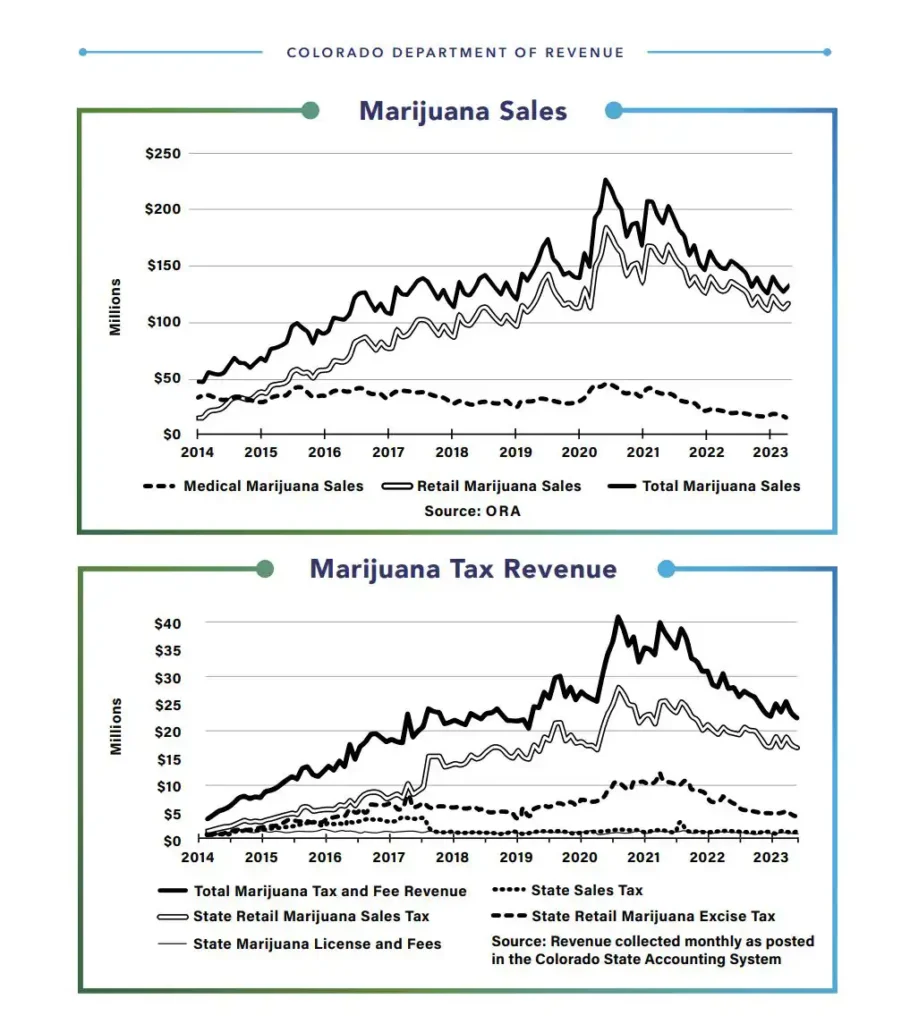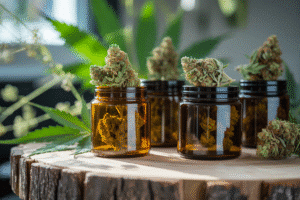- Key strategies & policies shaping legal market competition vs illicit trade
Cannabis’s Hidden Battle: Taming the Black Market

Contents
Contents
Introduction
The rapid expansion of cannabis legalization across the United States has transformed the marijuana industry, offering economic benefits and regulated consumer access. However, the resilient black market remains a significant challenge.
This article explores the intricate relationship between legalization and the illicit cannabis trade, focusing on key drivers such as:
- Price disparities between legal and illegal markets
- Availability and access issues
- Quality and safety concerns
- Consumer behavior and preferences
By analyzing these factors, we aim to propose effective strategies to strengthen the legal market and reduce illegal activity, ultimately fostering a more sustainable and well-regulated cannabis industry.
Key Takeaways
Understanding the impact of cannabis legalization on the black market reveals several crucial insights:
- Legal marijuana prices have decreased, yet illicit trade persists.
- Black market cannabis thrives on convenience, lower prices, and diverse products.
- High taxes and regulations hinder legal dispensaries, fueling underground competition.
Effective policy reforms are essential to boost the legal cannabis industry and combat illicit sales.
The Effects of Legalization on Cannabis Pricing
1.1 Price Trends in Legal Marijuana Markets
Cannabis legalization has caused a significant reduction in prices across legal markets due to:
- Increased Competition: A surge in licensed dispensaries and large-scale cultivation operations has expanded market supply.
- Economies of Scale: Larger producers can grow cannabis more efficiently, lowering production costs.
- State-Specific Trends:
- Colorado: The average price per ounce dropped from $200 in 2014 to $120 in 2019, according to the Colorado Department of Revenue.
- California: A 20% decline in prices between 2018 and 2020 as reported by the California Cannabis Industry Association.
These reductions reflect market growth and consumer preference for affordable, legal products.

1.2 Black Market Cannabis Price Comparison
Despite lower prices in legal markets, black market cannabis remains substantially cheaper:
- Price Gap: Black market products are typically 30-50% less expensive than legal alternatives.
- State Examples:
- California: Black market prices are 30-50% lower, according to a 2021 study by the California Cannabis Industry Association.
- New York: Black market products were 40% cheaper during the first year of legal sales.
Reasons for the Price Disparity:
- Black market operators avoid taxes and regulatory costs.
- Illegal producers have no compliance expenses.
- Lower overhead costs enable cheaper pricing.
This ongoing price gap draws consumers to the black market, posing a challenge to the legal industry.
Cannabis Availability and Access
2.1 Expansion of Legal Cannabis Markets
Marijuana legalization has greatly expanded access to regulated cannabis products, with a significant number of licensed dispensaries across various states:
- California: 1,244 dispensaries as of January 2024.
- Colorado: 1,023 dispensaries.
- Oklahoma: Leading with 2,387 dispensaries.
- Michigan: 994 dispensaries.
This growth in legal outlets aims to provide widespread access, reduce reliance on illegal markets, and support a regulated cannabis industry. However, the distribution of dispensaries varies significantly by state, influencing local market dynamics.
2.2 Persistent Black Market Cannabis Presence
Despite the expansion of legal dispensaries, illicit cannabis sales remain substantial:
- California: Up to 80% of cannabis transactions occur outside the legal market (Drug Enforcement Policy Center, 2023).
Contributing Factors:
- Uneven distribution of dispensaries across states.
- Limited access in rural and underserved areas.
- Local restrictions that prevent dispensary openings.
These challenges continue to push consumers toward unlicensed sources, particularly in areas lacking convenient access to legal products, complicating efforts to regulate the cannabis industry effectively.
Cannabis Quality and Safety Considerations
3.1 Legal Marijuana Market Standards
Cannabis legalization has established stringent quality control measures to ensure product safety and consistency:
- Testing Requirements:
- Comprehensive screening for contaminants such as pesticides, heavy metals, and molds.
- Verification of potency levels and accurate product labeling.
Example: In Colorado, cannabis products must pass tests for over 100 harmful substances. These regulations reduce health risks, increase consumer trust, and maintain consistent quality standards across the legal market, making regulated products safer and more reliable than unregulated alternatives.
3.2 Black Market Cannabis Quality Concerns
The black market, lacking oversight and quality control, poses serious health risks:
- Study Findings: A 2023 report from the Journal of Cannabis Research revealed that 40% of black market samples contained dangerous contaminants, including high levels of pesticides.
- Health Incidents: Numerous hospitalizations have been linked to contaminated black market vape cartridges, highlighting the dangers of unregulated cannabis.
This lack of quality assurance emphasizes the importance of purchasing from licensed dispensaries to safeguard consumer health and safety.
Factors Contributing to Cannabis Black Market Persistence
4.1 High Taxes and Regulatory Costs
- Excessive taxation: Up to 40% effective tax rate in some states, such as California. In the first quarter of 2023, California collected only $128.8 million in cannabis excise taxes, a decline of over 40% since the peak in 2021 (California Department of Tax and Fee Administration).
- Impact:
- Legal marijuana prices are significantly higher than black market options.
- Reduced competitiveness of licensed cannabis businesses.
- Consumers are driven to cheaper, unregulated products.
4.2 Complex Cannabis Licensing Processes in California
California’s Proposition 64 introduced a challenging dual licensing system for marijuana businesses:
- Requirement: Both state and local permits needed
- Impact on legal cannabis market:
- Creates significant barriers to market entry
- Limits expansion of licensed marijuana operations
Key statistic: Only 44% of California’s 540 cities and counties allow commercial cannabis activity
Consequence: Severe restriction of legal marijuana access across the state
Challenge for cannabis entrepreneurs: Navigating complex licensing procedures in limited jurisdictions
4.3 Limited Banking Access for Cannabis Businesses
- Federal prohibition effects:
- Restricted access to traditional banking services.
- Cash-based operations are common in the legal marijuana industry.
- Challenges:
- Complicated financial management.
- Increased security risks.
- Reduced competitiveness against the more agile black market.
4.4 Consumer Preferences in Cannabis Purchasing
Factors driving black market purchases:
- Established relationships with illegal dealers.
- Convenience of unregulated sources.
- Lower prices of illicit marijuana.
- Perceived quality or variety advantages.
- Lack of awareness about legal cannabis options.
4.5 Fragmented Legal Cannabis Framework
- Inconsistent regulations across states and localities:
- Market confusion and loopholes exploited by black market operators.
- Hindered enforcement of marijuana laws.
- Complications in developing a cohesive national legal cannabis industry.
Strategies to Combat the Cannabis Black Market
5.1 Cannabis Tax Reform
Despite the elimination of the cultivation tax, the 15% retail excise tax continues to place a significant burden on legal businesses.
- Goal: Enhance the competitiveness of legal marijuana prices.
- Strategy: Adjust tax rates to reduce costs for consumers.
- Example: Oregon’s tax reduction increased legal market share by making legal products more affordable.
- Benefits:
- Encourages consumers to choose licensed dispensaries.
- Reduces demand for cheaper, illicit cannabis.
5.2 Streamlined Cannabis Licensing
- Objective: Lower barriers to legal market entry.
- Actions:
- Simplify licensing procedures.
- Reduce compliance costs for cannabis businesses.
- Provide financial support for small operators through grants or subsidies.
- Impact: Expands legal market options, making it easier for consumers to access regulated products and reducing black market reliance.
5.3 Enhanced Cannabis Enforcement in Legal Markets
Key challenge: Grant funding for marijuana enforcement limited to jurisdictions allowing commercial cannabis operations
- Impact: Majority of cities and counties excluded from enforcement resources
Strategies to combat illegal marijuana activities:
- Strengthen enforcement:
- Target unlicensed cannabis sellers
- Crack down on illegal grow operations
- Implement stricter penalties:
- For unlicensed cannabis distributors
- For landlords leasing to illegal marijuana businesses
- Increase funding:
- Allocate more resources to cannabis law enforcement
- Support targeted crackdowns on illicit marijuana activities
Success story: California’s 2023 cannabis enforcement budget increase
- Result: Significant reduction in illegal marijuana operations statewide
Ongoing issue: Balancing enforcement between legal cannabis markets and non-participating jurisdictions
5.4 Cannabis Banking Reform
- Solution: Pass the SAFE Banking Act to provide legal businesses with access to financial services.
- Benefits:
- Decreases reliance on cash operations.
- Enhances financial transparency and security.
- Levels the playing field with black market operators.
5.5 Cannabis Consumer Education
Strategy: Launch comprehensive campaigns to educate consumers on regulated cannabis products
Key focus areas:
- Safety of legal marijuana products
- Quality control in licensed dispensaries
- Legal compliance and consumer protection
Expanded educational topics:
- Risks of unregulated cannabis products
- Understanding different cannabinoids (THC, CBD, etc.)
- How to identify licensed cannabis retailers
Success Story: Colorado’s “Check Your Source” campaign
- Outcome: Increased awareness of legal cannabis sources
- Result: Boosted participation in the legal marijuana market
New focus: Dangers of unregulated hemp-derived products
- Reference: “Pandora’s Box” report highlights risks
- Specific concern: Unregulated delta-8 THC products
- Educational goal: Inform consumers about potential health hazards
Impact of consumer education:
- Shifts purchasing behavior towards legal cannabis sources
- Reduces support for black market marijuana
- Increases consumer awareness of product safety and quality
- Helps consumers distinguish between regulated and unregulated products
Long-term benefits:
- Strengthened legal cannabis market
- Improved public health and safety
- Reduced demand for illicit marijuana products
Conclusion: Challenges and Solutions in Cannabis Legalization
The persistence of the cannabis black market post-legalization highlights ongoing regulatory challenges:
Key obstacles include:
- High cannabis taxes,
- Complex licensing procedures,
- Limited banking access,
- Fragmented state regulations,
- Consumer loyalty to the black market.
Effective strategies involve:
- Tax reforms to lower costs,
- Streamlined licensing processes,
- Strengthened enforcement against illegal activities,
- Federal banking reform,
- Consumer education on the benefits of legal cannabis.
Collaboration among policymakers, industry leaders, and communities is crucial to implementing these strategies. By addressing these issues, we can build a robust, sustainable legal cannabis market that enhances public safety and maximizes the benefits of legalization.
Stay Ahead in the Evolving Cannabis Landscape
Stay informed on the latest developments in the cannabis industry! Subscribe to our newsletter for exclusive insights, in-depth analyses, and updates on market trends, regulations, and strategies for navigating the evolving landscape. Don’t miss out on expert advice and industry news that can help you stay ahead in the legal cannabis market. Join our community today!
This article and all content on this website are intended solely for educational and informational purposes. The information presented here is based on publicly available sources and our own research and should not be considered as medical, legal, or professional advice. We do not support, condone, or promote the use of synthetic substances, or any illegal activity. Always consult with a qualified healthcare provider or legal professional before making any decisions related to synthetic cannabinoids or other controlled substances. We strive for accuracy and responsibility in our content and encourage readers to independently verify any information. For more details, please refer to our full Disclaimer.




